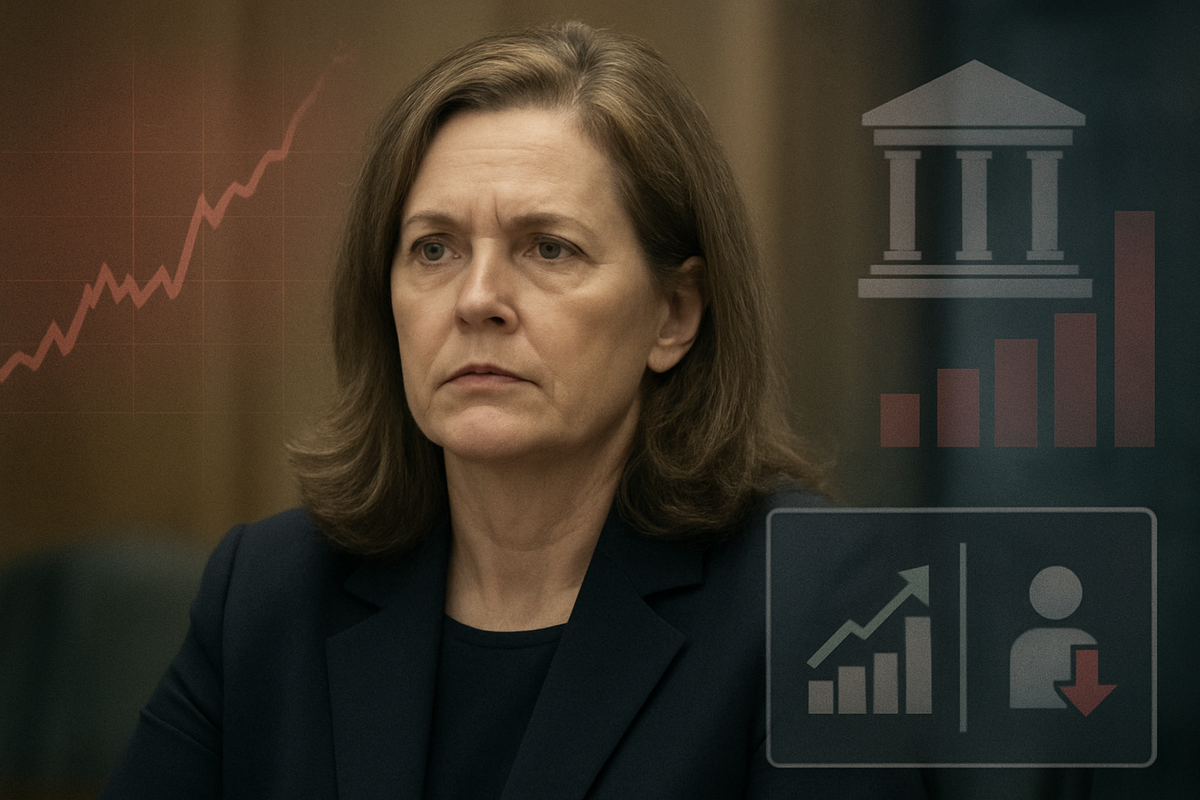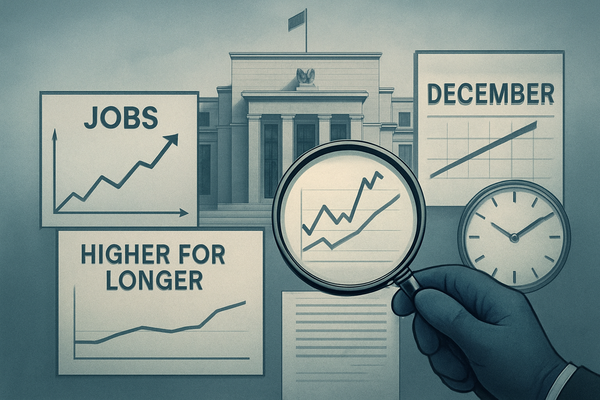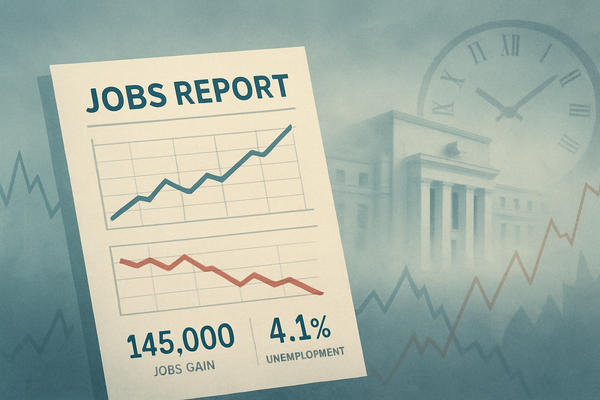Hammack Holds Hawkish Line: Cleveland Fed President Warns Against Rate Cuts Despite Mixed Jobs Report

Cleveland, OH – November 20, 2025 – Cleveland Federal Reserve President Beth Hammack delivered a stern warning today against further interest rate reductions, even as the delayed September 2025 jobs report presented a mixed picture of the U.S. labor market. Speaking at the Cleveland Fed's 2025 Financial Stability Conference, Hammack reiterated her unwavering focus on combating persistently high inflation, signaling a continued hawkish stance that could temper market expectations for a swift pivot to looser monetary policy. Her remarks underscore a critical juncture for the Federal Reserve, as it navigates economic data that offers both signs of softening and underlying resilience, all while inflation remains stubbornly above target.
The central bank's path forward is under intense scrutiny from investors, businesses, and households alike. Hammack's comments, coming on the same day the September jobs data was finally released, highlight the ongoing tension between supporting a slowing labor market and reining in inflation that has lingered around 3% for nearly five years. Her cautionary tone suggests that the "insurance" rate cuts seen earlier in the year may be the extent of the Fed's accommodative actions for the foreseeable future, prioritizing financial stability and price control over immediate labor market support.
Navigating Stale Data and Stubborn Inflation
The September U.S. jobs report, delayed due to a government shutdown and released today, November 20, 2025, revealed that the economy added 119,000 new jobs, significantly exceeding the forecast of 50,000. However, this growth was accompanied by a rise in the unemployment rate to 4.4%, its highest level since October 2021. Despite the headline job gains, President Hammack characterized the data as "a bit stale" and "a bit dated," reflecting its backward-looking nature. She noted the report appeared "mixed" but aligned with her expectation of "some further softening in the jobs market." The household survey within the report offered a more robust view, showing employment increasing by 251,000 and the labor force expanding to a record 171.2 million, pushing the participation rate to 62.4%. Average hourly earnings also saw a modest increase of 0.2% for the month and 3.8% year-over-year.
Hammack's consistent hawkish perspective has been a defining feature of her recent commentary. In her opening remarks at today's conference, she explicitly warned that lowering rates to support the labor market could prolong elevated inflation and heighten financial stability risks. She argued such actions might encourage speculative behavior and risky lending, potentially delaying the identification of weak lending practices and leading to a more severe future downturn. This sentiment echoes her earlier statements, including an August 22, 2025, interview with Yahoo Finance, where she saw no justification for rate reductions, and her September 23, 2025, remarks emphasizing caution given inflation's persistence. While acknowledging two 25 basis point rate cuts earlier in the year as "insurance," her current stance remains firm: monetary policy should stay "somewhat restrictive" to guide inflation back to the Fed's 2% target.
Her remarks today emphasize that despite difficult conditions for workers, characterized by a "low-hiring, low-firing environment" where individuals are "holding on to their jobs for dear life," her primary focus remains on combating inflation. This steadfast commitment comes even as the September jobs report initially led to a slight increase in market expectations for a December rate cut. Hammack's position, aligning with other cautious Fed officials, clearly prioritizes long-term price stability over short-term economic stimulus, setting a challenging tone for those hoping for a more dovish pivot.
Market Implications: Winners and Losers in a Restrictive Environment
A sustained restrictive monetary policy, as advocated by President Hammack, carries significant implications for various sectors of the economy and public companies. Companies heavily reliant on consumer spending and access to cheap credit are likely to face headwinds. For instance, housing market participants, including homebuilders like D.R. Horton (NYSE: DHI) and Lennar Corporation (NYSE: LEN), could see continued pressure on demand as higher mortgage rates persist. Similarly, consumer discretionary retailers such as Target (NYSE: TGT) and Amazon (NASDAQ: AMZN) might experience reduced sales as consumers grapple with higher borrowing costs and potentially slower wage growth in real terms.
Conversely, a "somewhat restrictive" environment could benefit financial institutions that thrive on higher net interest margins. Banks like JPMorgan Chase (NYSE: JPM) and Bank of America (NYSE: BAC) could see their profitability boosted by the spread between what they pay depositors and what they earn on loans. Additionally, companies with strong balance sheets and less reliance on external financing, particularly those in essential services or defensive sectors, may prove more resilient. Technology giants with substantial cash reserves, such as Apple (NASDAQ: AAPL) and Microsoft (NASDAQ: MSFT), might be better positioned to weather a period of higher rates and tighter credit conditions, potentially even using their financial strength to acquire struggling competitors.
Furthermore, a focus on financial stability, as highlighted by Hammack, could lead to increased scrutiny and potentially tighter regulations for certain segments of the financial market. This might impact nascent or rapidly growing sectors prone to speculative activity, potentially dampening innovation in some areas but fostering greater resilience overall. Companies involved in credit analysis, risk management, or those providing essential financial infrastructure could see increased demand for their services as institutions seek to navigate a more cautious lending landscape.
Broader Significance: A Tug-of-War Between Inflation and Growth
President Hammack's firm stance fits into a broader global trend where central banks are grappling with the lingering effects of post-pandemic inflation. While many economies have seen inflation cool from its peaks, bringing it down to target levels has proven to be a persistent challenge. This "last mile" of disinflation is proving to be the hardest, as underlying price pressures from services and wages remain elevated. The Federal Reserve's current approach, prioritizing inflation control even at the risk of a slightly softer labor market, reflects a lesson learned from historical precedents where premature easing led to a resurgence of price pressures, necessitating even more aggressive tightening later.
The potential ripple effects of this policy extend beyond U.S. borders. A hawkish Fed, maintaining higher interest rates, tends to strengthen the U.S. dollar, which can make American exports more expensive and imports cheaper. This impacts multinational corporations and can create challenges for emerging markets that have dollar-denominated debt. Furthermore, the emphasis on financial stability could lead to increased regulatory oversight across the financial industry, potentially affecting capital requirements for banks and investment firms. This proactive approach aims to prevent the kind of systemic risks that contributed to past economic crises, such as the 2008 financial crisis.
Historically, periods of sustained high inflation have often been followed by prolonged periods of restrictive monetary policy, sometimes leading to recessions. The Fed's current strategy appears to be a delicate balancing act, attempting to engineer a "soft landing" where inflation returns to target without triggering a severe economic downturn. However, the mixed signals from the labor market, combined with Hammack's caution, suggest that the path ahead is fraught with uncertainty, and the central bank is prepared to err on the side of caution regarding inflation, even if it means a slower pace of economic growth.
The Road Ahead: What Comes Next for Markets and Policy
Looking ahead, the Federal Reserve's next moves will be closely watched, particularly the December Federal Open Market Committee (FOMC) meeting. While the September jobs report led to a slight uptick in market expectations for a rate cut, President Hammack's unequivocal message today suggests that such hopes may be premature. Short-term possibilities include continued volatility in equity and bond markets as investors adjust to the reality of potentially "higher for longer" interest rates. Companies will need to adapt their strategic pivots, focusing on cost efficiency, optimizing capital allocation, and strengthening their balance sheets rather than relying on easy credit for expansion.
In the long term, if the Fed maintains its restrictive stance and inflation gradually recedes, it could pave the way for a more stable economic environment. However, this path is not without challenges. A prolonged period of tight money could eventually lead to a more significant economic slowdown or even a recession, presenting new market opportunities in defensive sectors and value stocks, while posing challenges for growth-oriented companies. Investors should pay close attention to upcoming inflation data, particularly the Consumer Price Index (CPI) and Personal Consumption Expenditures (PCE) reports, as well as further commentary from other Fed officials for any signs of shifting sentiment.
Potential scenarios range from a successful "soft landing" where inflation returns to target without a severe downturn, to a harder landing if the restrictive policy proves too potent. The key will be the Fed's flexibility and its ability to react to incoming data without compromising its primary objective of price stability. Market participants should prepare for a period where economic data releases, central bank speeches, and geopolitical events will continue to drive significant market movements, demanding agility and a well-diversified investment strategy.
Wrap-Up: A Resolute Stance in Uncertain Times
Cleveland Fed President Beth Hammack's recent remarks provide a clear and resolute message: the fight against inflation remains the Federal Reserve's top priority. Despite a mixed September jobs report that hinted at some labor market softening, Hammack's caution against further interest rate cuts underscores the central bank's commitment to price stability, even if it means maintaining a "somewhat restrictive" monetary policy for longer than some market participants might desire. The "stale" nature of the jobs data further complicates the picture, but it does not sway her hawkish stance.
Moving forward, the market will likely remain in a state of watchful anticipation. Investors should assess their portfolios for resilience in a higher-for-longer interest rate environment, favoring companies with strong fundamentals, manageable debt, and consistent cash flows. The assessment of the market moving forward points towards continued vigilance regarding inflation metrics and the nuanced communications from Federal Reserve officials. The lasting impact of this period of monetary tightening will depend on the Fed's ability to successfully navigate the delicate balance between curbing inflation and avoiding a severe economic contraction. What investors should watch for in the coming months are not just the headline economic numbers, but also the underlying trends in wage growth, service inflation, and any signs of cracks in financial stability that might force the Fed's hand.
This content is intended for informational purposes only and is not financial advice



